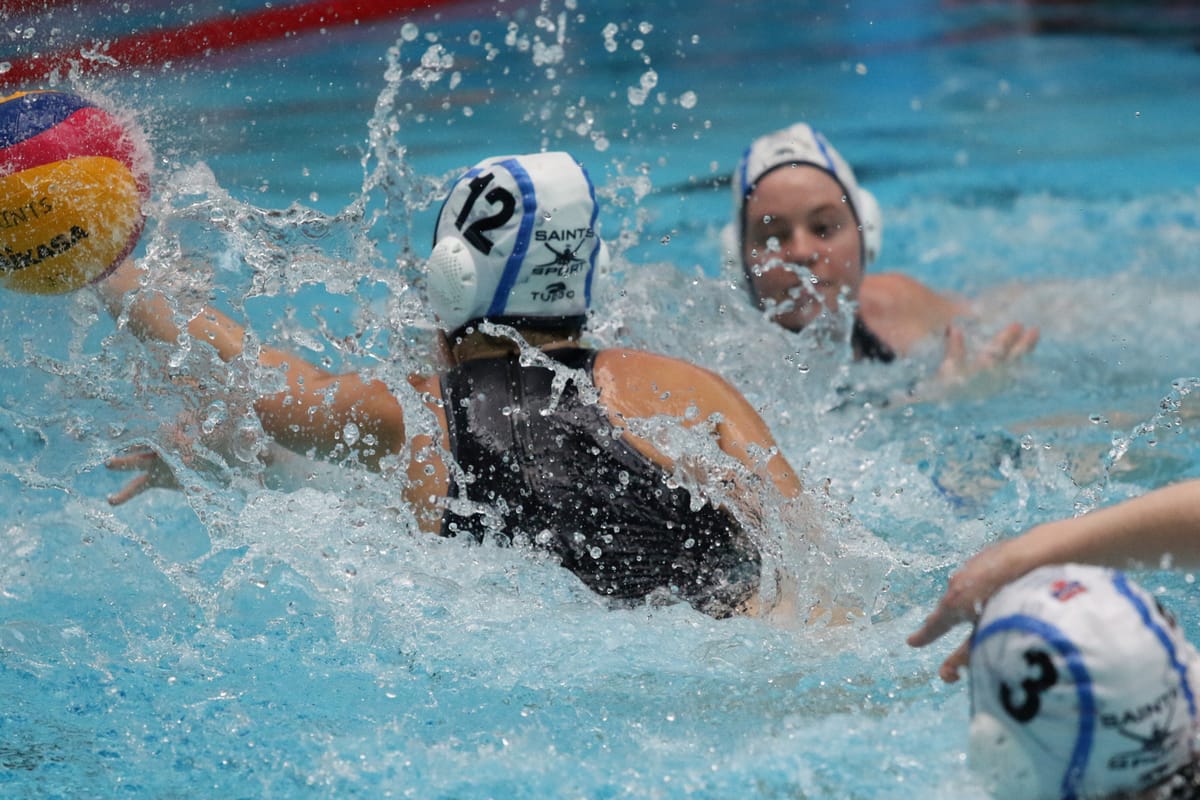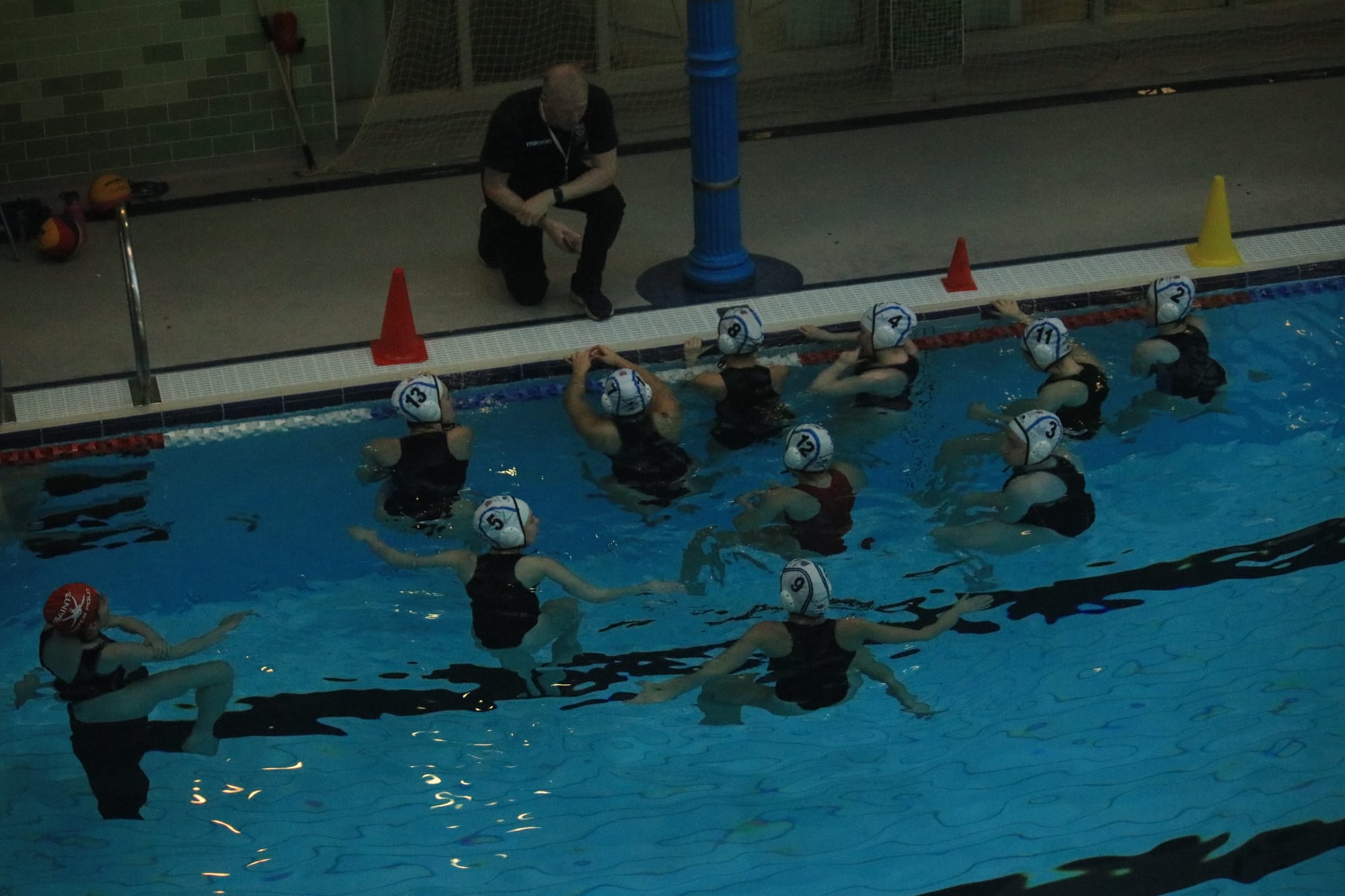To advance the public participation in Water Polo

The objective of the Club shall be to Advance the public participation in Aquatic Sports
This is the objective laid out in the SASA model constitution for clubs in Scotland. At the risk of wading into the monotony that is constitution and policy writing, I think it is a good springboard for reconsidering how we think about clubs and sport.
The ultimate aim of every club that has adopted this as their objective is simple - to widen, promote and increase participation in swimming, water polo and other disciplines. Clubs are held back by a chronic shortage of volunteers, which results in a few key people being relied upon heavily (so-called stalwarts of their clubs) and an inability to think in the long term. Cathedral thinking does not matter much if your main concern is the next event to be organised, what you will deliver at your sessions that week, and how you will stay on top of the work to be done.
For some, the solution is paid coaches and expensive memberships. Like everything else, it's commercialised, sanitised and starved of what makes a club - and a sport - something worth being a part of: Community spirit, a sense of belonging, and giving back.
I do not claim to have all the solutions to this problem nor the decline in sport more broadly as we look towards screens and esports as alternatives to real, physical sports. But if clubs are to meet and overcome these changes, having a long-term strategy will be crucial. One that sets out a roadmap in terms of years, not weeks, that explicitly emphasises growth in both volunteer and member numbers and builds upon the present instead of maintaining the status quo.
In this post, I will build upon my experience as part of Menzieshill Whitehall, a club based in Dundee and lately as part of the University of St Andrews Water Polo Club. I will outline the steps clubs should take to widen the appeal and playing of water polo in Scotland. I do not think this is ultimately a doomed goal; many kids want to play sports with some variety and not just the mainstream blocs of football, rugby and athletics.

Growing Scottish Water Polo
For clubs
Upskill -> Engage -> Recruit
I believe three key stages are required to grow the sport. They are repeatable and could be completed as a cycle - for example, every two years. All three are essential to getting more people into water polo.

1: Upskill
This is the first stage, and it is also perhaps the most difficult. It requires club leaders to accept some risk and invest in their members. To give members the skills, knowledge and experience they can use to empower the future of the sport.
Water polo cannot happen without referees, table officials, coaches, committees and players. Providing a pathway with as little friction as possible for players, parents, and the enthusiastic to fulfil these roles is essential.
Scottish Swimming currently charges £300 for a course in coaching water polo, which puts a significant bound on the number of qualified coaches available. Carrying out these roles is almost always a volunteer endeavour. Asking people to sacrifice their time for the sport is one thing. Asking them to pay for the privilege is another - it is insulting.
Therefore, clubs must offer courses free of charge to their members - with the proviso that they will give back with those new skills and continue to volunteer their time. This is all well and good, you could say, but it does not solve the fundamental problem of a lack of volunteers.
There are many ways of approaching this issue - we've tried a few at Menzieshill Whitehall. You can try to guilt trip, badger and force parents into these roles. After all, it's a club - not childcare - but it will not work in most cases. The reason is simple. Parents are not enthusiasts: They do not have the fire - the passion for the sport - that a player does.
The solution, I believe, is to upskill the players. Offer Senior players a choice: You have benefited from the club, so now choose a way to give back. This could be as simple as giving them a form with five options:
- Coach
- Referee
- Table Official
- Club Volunteer (committee, etc.)
- (Performance) player
Then, once a candidate has chosen a role (or roles), act on that decision. Run courses, give them the opportunity to pick up the skills and knowledge for that role and apply it to real game environments. This links well into the engage stage - having more qualified, competent volunteers helps you to deliver the sport to schools and eases the acute lack of match officials we experience.
You may notice that one of the categories above is an outlier. Performance player. That is not a supporting role, but I think it is essential to include those who genuinely have those aspirations so they can focus on honing their performance play and achieving their potential. It must not, however, become a cop-out for players who do not want to give back. An expectation and culture of giving back and getting involved must be instilled within the club and every member.

2: Engage
Next, we must engage with children and young people. Children and young people are generally curious and open to trying new things. That extends to sport: I'm sure many people have memories of trying water polo for an afternoon in their PE lesson and enjoying it - but not quite knowing how to take it any further.
This engagement should come in two forms: First, offer PE teachers a coaching qualification free of charge. They will benefit from the courses as Continuing professional development (CPD), and then when those sessions in PE are held, the game is played well, and players get an authentic experience of the sport. Teachers will then be more likely to start a team at the school, introducing far more people to water polo.
This must be done with care, however. A course full of teachers with no experience water polo experience learning to coach may not deliver all that much value. Classes should be a mix of experienced players, supporters (those being upskilled), and teachers - who should also be encouraged to come down to club sessions and experience water polo. This will also help with the next phase - recruit - by establishing ties between the club, school teams and the teachers themselves.
Second, use the newly skilled volunteers to build local leagues. University students could help coach school teams. Referees and table officials officiate for inter-school competitions. A new club volunteer post could be created to coordinate the running of the league. Having school competitions inextricably linked with and organised by clubs would be a great advantage: Seeding ties to clubs and further participation in the sport at every opportunity.
By reaching out and engaging with the school teams to deliver sustainable water polo at that level, you will enthuse a new generation of young people with the sport. Instead of picking from a few sports with a meaningful form of competition at the school level, you introduce a new option and create a whole new arena for water polo to be played. This gives rise to three main leagues: University water polo from BUCS, School water polo from clubs and finally, club water polo from Scottish Swimming - the highest level of the sport, which leads into national programmes.
Engaging with schools can provide a new opportunity for young people and bring many more people into the sport - but it requires a change in thinking. From "How can this investment benefit us and benefit our club?" to "How can we benefit and grow the sport?". Which was supposedly the goal in the first place.

3: Recruit
The first two stages have both been about investment for the future of the sport, but that is not to say this could not yield great benefits for clubs too. More members mean fuller teams, more membership money and ultimately more participation. Clubs should be capable of scaling to meet the demand, using the newly upskilled volunteers and coaches to deliver sessions and do the supporting background work.
Social media and online presence are key components of recruiting in the modern age, and I think they are often neglected. Young people are more likely to look at what the club is up to and how to get involved through Instagram (or TikTok...) than on a website or in print, and it is essential to make joining as easy as possible. Every single friction point in this process will be a point at which potential members are lost. Profiles must show the club in a good light and promote its achievements, but also make it obvious how to get involved, the times of sessions, and where to go if they have any questions. Clubs should have a strong and consistent brand, using the same colours, logos, typeface and kit for all so that they are recognisable and have a shared identity.
Different media can be used to support recruitment: Flyers distributed at school tournaments and school team training sessions, posters on the walls in schools, and friendly, inviting social media with a clear call to action to get involved. Getting involved by messaging the page is one option; But the use of a form removes any uncertainty or fear of judgement for those reaching out. Fill in your details, hit send and be done with it - and leave club representatives to reach out, engage, and get them down to a session.
A key balancing act is that the manual work for volunteers per member joined must be minimised for it to be scalable - without sacrificing the experience and ease for new joiners. Volunteer time is precious.

Conclusion
Given the successful execution of these three steps, clubs will become larger, with a more sustainable pool of volunteers, and a whole new league of water polo ready to be experienced by young people.
These are clearly big, lofty goals that will require long-term thinking and multiple years to achieve. And they will not be perfect: Treating them as a cycle to be repeated will ensure that we pick up where we left off and continually drive more volunteers, officials and players into the sport. Or, at the very least, start thinking more concretely about what we want to achieve.

